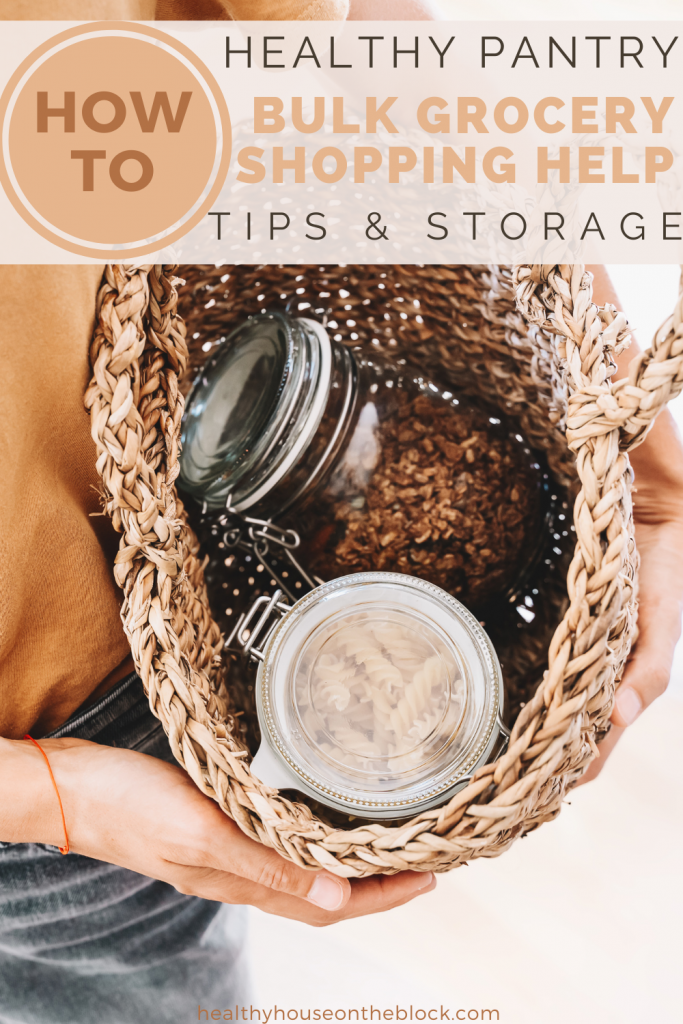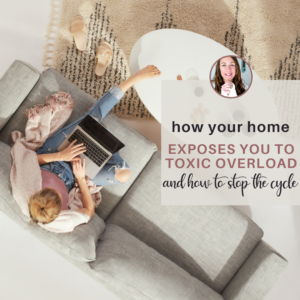
If you’ve made eating healthy or creating a healthy kitchen a top priority in 2025, the pantry is one of the BEST places to start. Buying bulk pantry staples is a great way to cut down on waste and have some control over what you’re bringing into your house as far as materials and food goes.
But it also means having to come up with storage solutions and ways to keep track of how long an item has been in your pantry.
Buying bulk pantry staples definitely takes a bit of a shift in mindset and habits. But once it’s an established routine, it becomes second nature. These tips will help you create this routine and these habits as well as give you the reasoning behind changing up your pantry storage and items.
Bulk Pantry Items You Should Try
Items such as grains, beans, nuts and seeds are GREAT bulk pantry staples to add to your home. These items can be purchased in bulk, meaning they’re not prepackaged. This way you can store them in glass containers or silicone bags at home.
Seasonings and spices are also a great addition to your bulk pantry staples. How often do you end up using a spice in its entirety? We have a few that we go through on a regular basis, but there are also some that end up staying in our cupboard for long periods of time. When buying bulk, it reduces the need to buy large quantities that won’t get used.
Another bulk pantry item to take advantage of us dried fruit. Again, you won’t be buying prepackaged and you can store your bulk pantry item in whatever healthy container you’d like.
If you find a store that specializes in bulk pantry items, you can even purchase nut butters and cooking oils in the bulk pantry section of the store. These of course would require you bring with the appropriate container for transport, but this is such a great option.
Not only does this cut down on waste in general, but it also means your food is being stored in the packaging YOU pick. You get more control over the amount of plastic in your home.
And finally, use bulk pantry stores to buy baking items like flour, sugar, and baking chips. Again, this is such a great option as you can buy exactly what you need instead of buying in excess when it’s an item that you don’t go through and finish very often.
How to go shopping for bulk pantry items
First of all, you’ll need to bring your own jars and bags when buying bulk pantry items. The idea behind this is that it cuts down on waste from packaging. Plus, who really wants their food stored in flimsy plastic bags? Not me.
Glass jars are a great option — you can either purchase mason jars or reuse jars that you have from other items you use up in your house. Glass jars from things like coconut oil, jams and pasta sauces are great for reusing and bringing with you to go shopping.
You can also use cloth bags, which can be used for purchasing larger items or produce like onions, potatoes and other pantry staples.
If you’re going to be buying liquids or nut butters, make sure that you have an airtight container that has a gasket within the lid to seal it up. No one wants leaks or spills on their trip home.
Finally, silicone storage bags are another great option, especially for nuts and dried fruit. This makes it easy to bring them home and put them right in the pantry instead of having to move them to another storage container. Make sure you opt for 100% food grade silicone. (AND PLEASE don’t warm or heat your silicone).

How Store Pantry Products
Just like in purchasing, you’ll need containers to store your bulk pantry staples in. These are some of my favorite storage containers for the pantry:
Why Go Plastic Free in the Pantry and Ditch Prepackaged
Reduce plastic waste: Every time an item is purchased that has a plastic container or bag, the majority of the time the plastic is added to our never ending problem of plastic waste. Most plastic bags cannot be recycled as they have food in them and also due to their specific make up of plastic.
When you shop with glass, silicone and cloth containers, you’re reducing the plastic that you can. Imagine if most people started shopping this way. We’d see a huge shift in the amount of waste produced in our communities. (Study)
Plastic waste often ends up in wildlife habitats as well as the ocean. And this is where the bigger problem comes in: animals and fish are consuming parts of plastic, which then ends up in the poultry, fish and other meats we eat. (Study)
Store food in healthier alternatives: Plastic is one of the more dangerous materials we have around our house. Plastic has been linked to increased risk of cancer, birth defects, immune system dysfunction, and endocrine disruption (just to name a few). (Study)
Some more acidic foods can be particularly dangerous when packaged in plastic. Typically, food that contains more acids leaches more of the toxins from plastic into the food itself.
Cut down on prepackaged items: Let’s be honest, the more packaged snacks and foods you have in your house, the more you will eat them. And if I’ve learned anything over the last year of my life it is that pre-packaged foods generally contain a slew of preservatives, artificial flavors and artificial colors. (Study) All of these are toxic to our health and they’re contributing to the overall problem with body burden. (Study) These additives have been linked to problems in learning with children and other side effects aggressiveness, hyperactivity and allergies. (Study)
You’re better off making your own snacks from “scratch” using items you have in your pantry. Not only will they taste better, but you have complete control over what is put into these snacks.

Organizing Tools for Your Pantry
Keeping a pantry stocked with bulk pantry staples means you’ll have to get in the habit of labeling your products. Without packaging, it can be tough to know when you bought it or sometimes even what it is.
These are my favorite ways to keep your pantry organized so you can (1) see everything you have, (2) know when you purchased it and (3) know exactly what you’ve got stocked.

What pantry staples will you add this year? Do you think this idea of storing pantry staples in toxin free containers will stick in your house?
Share this:
- Click to share on Facebook (Opens in new window) Facebook
- Click to share on LinkedIn (Opens in new window) LinkedIn
- Click to share on Reddit (Opens in new window) Reddit
- Click to share on Pinterest (Opens in new window) Pinterest
- Click to print (Opens in new window) Print
- Click to share on X (Opens in new window) X


